This is an adaptation on Glenn's solution above...
import UIKit
class BaseTabBarController: UITabBarController {
var tabBarBounds: CGRect? {
didSet {
guard tabBarBounds != oldValue else { return }
updateSelectionIndicatorColor(UIColor.green)
}
}
override func viewWillLayoutSubviews() {
super.viewWillLayoutSubviews()
tabBarBounds = tabBar.bounds
}
func updateSelectionIndicatorColor(_ tintColor: UIColor) {
guard let tabBarItems = self.tabBar.items else { return }
let tabWidth = tabBar.bounds.width
let tabHeight = tabBar.bounds.height
let tabSize = CGSize(width: tabWidth / CGFloat(tabBarItems.count), height: tabHeight)
var selectionImage = UIImage(color: tintColor, size: tabSize)
UIGraphicsBeginImageContext(tabSize)
selectionImage?.draw(in: CGRect(x: 0, y: 0, width: tabSize.width, height: tabSize.height))
selectionImage = UIGraphicsGetImageFromCurrentImageContext()
UIGraphicsEndImageContext()
tabBar.selectionIndicatorImage = selectionImage
}
}
public extension UIImage {
public convenience init?(color: UIColor, size: CGSize = CGSize(width: 1, height: 1)) {
let rect = CGRect(origin: .zero, size: size)
UIGraphicsBeginImageContextWithOptions(rect.size, false, 0.0)
color.setFill()
UIRectFill(rect)
let image = UIGraphicsGetImageFromCurrentImageContext()
UIGraphicsEndImageContext()
guard let cgImage = image?.cgImage else { return nil }
self.init(cgImage: cgImage)
}
}
